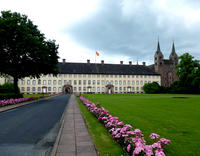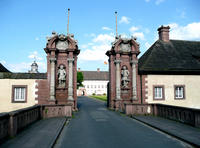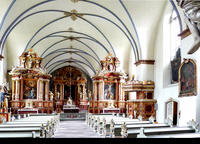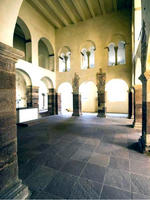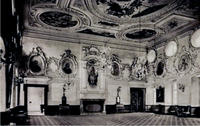You are in: Europe -> Germany -> Carolingian Westwork... , and traditional search or Image Gallery will yield results of this site only
Carolingian Westwork and Civitas Corvey
| Site number: | 1447 |
|
| Type of site: | Cultural | |
| Date: | 822-885 AD | |
| Date of Inscription: | 2014 | |
| Location: | Europe, Germany, Höxter | |
Up to 75 images are shown here. Click on each for more details or on Image Gallery for more images.
Six official UN languages:
English,
French,
Russian,
Spanish
Other languages: Bulgarian, Croatian, Czech, German, Hungarian, Italian, Norwegian-Bokmai, Polish, Portuguese
Other languages: Bulgarian, Croatian, Czech, German, Hungarian, Italian, Norwegian-Bokmai, Polish, Portuguese
| Description: | These structures are located along the Weser River on the outskirts of Höxter where they were erected between AD 822 and 885 in a largely preserved rural setting. The Westwork is the only standing structure that dates back to the Carolingian era, while the original imperial abbey complex is preserved as archaeological remains that are only partially excavated. The Westwork of Corvey uniquely illustrates one of the most important Carolingian architectural expressions. It is a genuine creation of this period, and its architectural articulation and decoration clearly illustrate the role played within the Frankish empire by imperial monasteries in securing territorial control and administration, as well as the propagation of Christianity and the Carolingian cultural and political order throughout Europe. --From the description at WHC Site, where additional information is available. | |
| The Imperial Abbey of Corvey (German: Stift Corvey or German: Fürstabtei Corvey) was a Benedictine monastery on the River Weser, 2 km northeast of Höxter, now in North Rhine-Westphalia, Germany. It was first founded in 815 among the recently converted Saxons on a site called Hethis[1] by Charlemagne's cousins Wala and Adelard, with monks from Corbie Abbey in Picardy, under the joint patronage of the Emperor Louis the Pious and the abbot of the older foundation, whence the new one derived its name (Latin: Corbeia nova, the "new Corbie"; Old German: Corvey pronounced [ˈkɔʁvaɪ]). In 822, the monastery was reconstructed on the present site near the banks of the river Weser. It became "one of the most privileged Carolingian monastic sanctuaries in the ninth-century Duchy of Saxony". --Wikipedia. Text is available under the Creative Commons Attribution-ShareAlike License. | ||
| Source: | http://whc.unesco.org/en/list/1447 | |
| Source2: | Wikipedia (http://wikipedia.com) | |
| Reference: | 1. UNESCO World Heritage Center (http://whc.unesco.org/en/list/1447). 2. Wikipedia. | |


